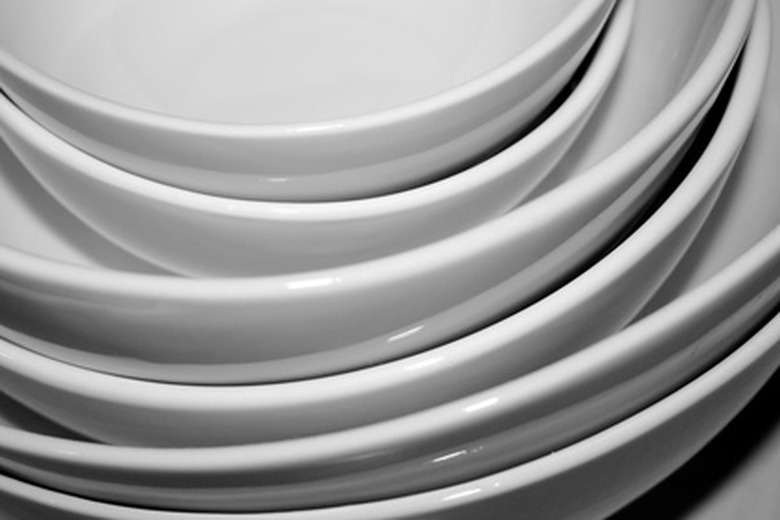Science Projects On Dish Detergents
It is rare that a student can learn about both science and household chores at the same time. By doing science projects about the properties of dish detergents, students will learn about germs, soaps, and the value of choosing the right brand. While there is no guarantee that these projects will get students to do more dishes at home, it may get them to think twice about leaving a sink full of dirty plates later in life.
Detergent and the Pond
Detergent and the Pond
This experiment will test the effects of detergent on the pond water. Keep in mind, this experiment should not be done in the pond but away from it, and the detergent-infused pond water should not be returned. Use a microscope to examine the properties of the pond water before and after adding the detergent and record your findings.
Detergent and Oil
Detergent and Oil
Have four separate groups, three with different brands of detergent in water and one with water alone. Add an equal amount of cooking oil to each detergent/water mixture and then record the visual results of what happens to the oil and see how the different detergents perform in breaking up the oil.
Bug Repellant
Bug Repellant
This project requires insects such as fruit flies, apples, and several different types of detergent. Put an equal number of flies into four different bags. Slice an apple into four quarters. On three of the apple quarters, place one of three different types of detergent, and on the fourth leave the apple alone as a control group. Place the apple quarters in the bags. After 15 minutes, observe which apples have the most flies on them and record your results.
Detergent and Bacteria
Detergent and Bacteria
Create bacteria on sponges by letting molasses or honey sit on spoons for a week and then place a swab of the liquid on the sponges, letting them sit for another week. Measure the sizes of the bacteria growth on the sponges. Test different detergents on the sponges with room temperature water and see how much the growth has been reduced. Record your findings.
Cite This Article
MLA
Cohen, Bryan. "Science Projects On Dish Detergents" sciencing.com, https://www.sciencing.com/science-projects-dish-detergents-6362379/. 24 April 2017.
APA
Cohen, Bryan. (2017, April 24). Science Projects On Dish Detergents. sciencing.com. Retrieved from https://www.sciencing.com/science-projects-dish-detergents-6362379/
Chicago
Cohen, Bryan. Science Projects On Dish Detergents last modified August 30, 2022. https://www.sciencing.com/science-projects-dish-detergents-6362379/
